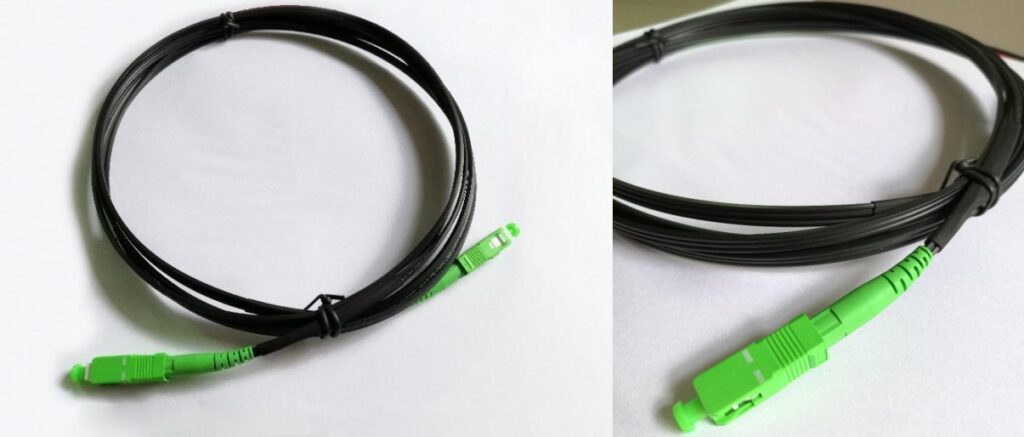G652 and G657 are two ITU-T standards for single-mode optical fiber. These standards describe the transmission, mechanical and geographical properties of single-mode optical fiber. ITU-T is a subsidiary agency of the International Telecommunication Union ITU, a specialized agency authorized by the United Nations. Currently, different types or families of single-mode devices are being manufactured, allowing users to select the device type that best suits their application. As of today, a total of 19 single-mode device specifications are available. For more information, please refer to article: “7 Types of optical fiber”.
What is G.652D fiber?
G.652 optical fiber is the most widely used single-mode optical fiber in metropolitan area networks. It provides zero dispersion at the wavelength of 1310nm,so called the best performance single-mode fiber at 1310nm, and is also called an optical fiber with no increase or decrease in dispersion. Except FTTH drop cables, all other communication cable are all used G6.652D fiber.
G.652 optical fiber is divided into 4 sub-categories. Currently, G.652D fiber the latest version and mostly used. It supports CWDM transmission too. At the same time, G652D single-mode fiber can also be operated at 1510nm, which makes it can be used in short-haul and long-haul applications.
The only disadvantage of G652D fiber is its inability to maintain higher bend radius. Even the highest quality G652D fiber is not allowed to sharp bend. Therefore, more fiber is required to avoid bending during deployment, resulting in higher overall costs.
Advantages of G652D fiber
- Backwards compatible with earlier versions
- Reduce system costs
- Provides zero dispersion and seamless splicing
- Reduce splicing loss
- Supports longer fiber optic deploying
What is G.657A2 fiber?
G657A2 is one of the four specifications defined by ITU-T under the G657 category. The most commonly used one at present is G.657A2. G.657 fiber is also known as bend loss insensitive fiber. The fiber used in ftth drop cable which is thinner than an ordinary telephone line is G.657 fiber. Without G.657 optical fiber, there would be no large-scale application of FTTH. Therefore, G657A2 optical fiber is mainly used in network installations that require high bending resistance and is an ideal solution for sharply bent access network cabling. For access networks where frequent bending and linking of optical fibers and hardware miniaturization, G657A2 is A powerful solution.
The most important thing is: G657A2 fiber and G652D fiber are fully compatible and can be used in series.
Advantages of G657A2 fiber
- Ideal for smaller cable installation radii
- Cost effective access network
- Supports higher density applications and miniaturization
- Provide greater flexibility
What is bending radius?
The bending radius refers to the maximum bending degree of the optical cable when it can maintain its normal working performance. The smaller the bending radius, the better the bending resistance of the optical cable. Normally, the static bending radius of an optical cable is 10 times the outer diameter of the optical cable, and the dynamic bending radius is 20 times the outer diameter of the optical cable. The bending radius of ordinary optical fiber jumpers on the market is generally 30mm, while the bending radius of bend-insensitive optical fiber jumpers is much smaller, only a few millimeters.
Various optical fibers have different characteristics and different physical constructions, which is why the allowable bending radius differ between fibers. Typically, optical fibers have a specified minimum bend radius. However, it is recommended that the minimum bending radius should be kept about ten times smaller than the outer diameter of the fiber. Therefore, the bending radius of a 4mm optical fiber should not be less than 40mm.
Comparison of bending radius between G657 and G652
G657 is a bend-resistant single-mode fiber. G657 fiber bending radius is half that of G652fiber. Which makes it more suitable for indoor laying and is generally used in FTTH environments.
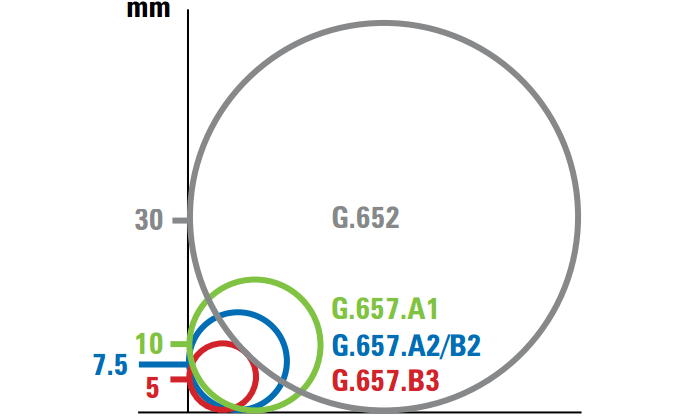
G.657.A2 fiber standard minimum bend radius is 7.5mm, G.657.A1 fiber bend radius is 10mm, G.657.B2 fiber bend radius is 7.5mm, G.657.B3 fiber bend radius is 5mm. While G.652D standard bend radius is minimum 30mm, but the two meaning of minimum bending radius are completely different.
- The minimum bending radius of G.657A2 optical fiber means: the optical fiber is loosely wound for one turn with a radius of 7.5mm, and the additional attenuation measured at 1550nm/1625nm does not exceed 0.5dB/1.0dB respectively.
- The minimum bending radius of G.652D fiber refers to: when the fiber is loosely wound for 100 turns with a radius of 30mm, the additional loss measured at 1625nm does not exceed 0.1dB.
Macro bending loss
When an optical fiber is bent, and the bending radius is much larger than its diameter, then there will be additional loss which is called macro bending loss. The macro bending loss of G.657A2 fiber and G.652D fiber as show below.
Obviously, the minimum bending radii of G.657A2 fiber and G.652D fiber are not comparable here.
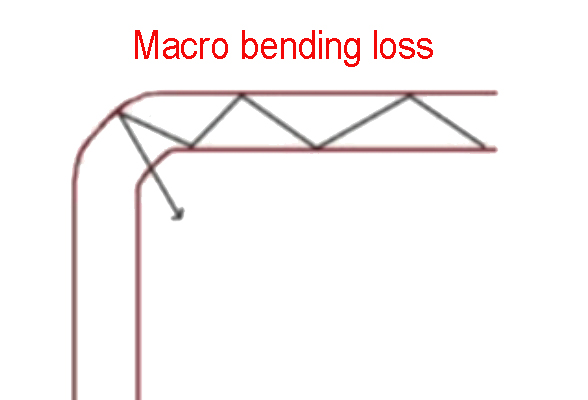
| Fiber type | G.652D | G.657A2 |
| Bend radius (mm) | 30 | 7.5 |
| Number of turns | 100 | 1 |
| Additional loss 1550nm | – | 0.5dB |
| Additional loss 1625mm | 0.1dB | 1.0dB |
Actual measurement of the bending resistance of G.657 and G.652 fibers
When laying and installing FTTH drop cable, in order to facilitate the termination of the drop cable, construction personnel often splice the FTTH drop cable with a short section of pigtails at the optical fiber distribution box and ONT (commonly known as “modem”), see below figure 4:
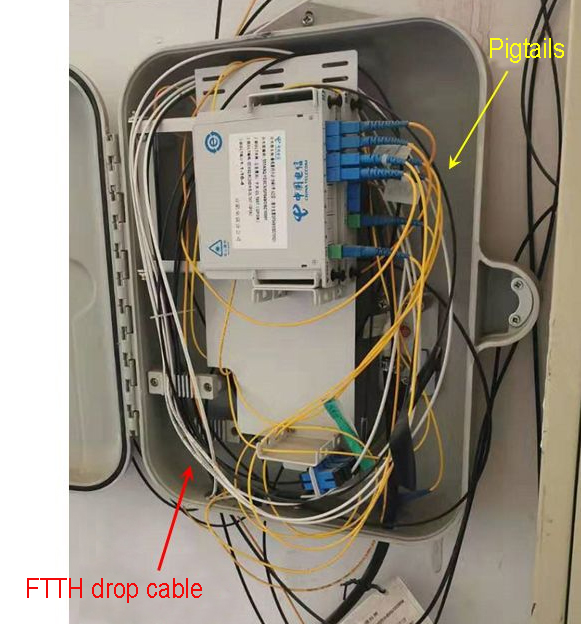
Note: The pigtail is G652D fiber, FTTH drop able is G657A2 fiber.
Because pigtails and drop cables are laid in the same environment and similar sizes (pigtail diameter is 2.0mm, and the short-axis/long-axis diameter of the drop cable is 2.0mm/3.0mm), therefore, compare the bend radius of pigtails and drop cables is more realistic and can basically reflect the difference in bending resistance between G.652D and G.657A2 optical fibers.
Since the macro-bending loss of optical fibers in ODN is mainly affected by the downlink wavelength (refer to article “The attenuation impact of insufficient fiber bending radius on ODN link”), so we only test the additional loss of pigtail and drop cables at 1490nm wavelength with different radii to wind 1 turn, some of the molds tested are shown in the figure 5 below.
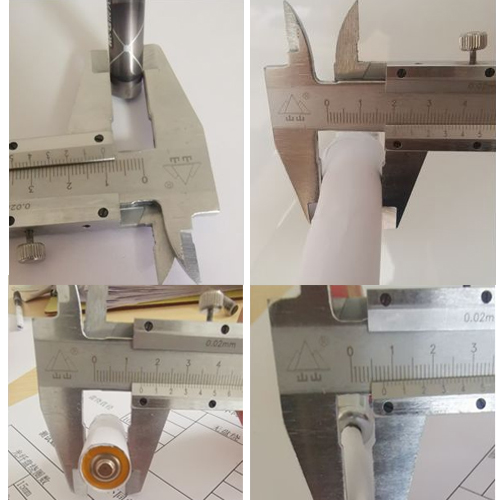
| Bend radius (mm) | Pigtail additional loss (dB)(G.652D) | Drop cable additional loss (dB) (G.657A2) |
| 10.0 | 0.18 | 0.02 |
| 7.5 | 1.6 | 0.06 |
| 5.0 | 8.13 | 0.37 |
| 3.8 | 15.61 | 0.65 |
| 2.5 | – | 1.71 |
| 1.5 | – | 6.68 |
From the test results, the bending resistance of the drop cable (G.657A2) is several blocks higher than that of the pigtail (G.652D). Especially at a small bending radius, the bending resistance of the drop cable is even better.
Conclusion
Because there is a huge difference in the bending resistance of G.657 and G.652 optical fibers, and the pigtail itself is relatively soft, it is very easy to bend with a small radius, as shown in the figure 6 below.
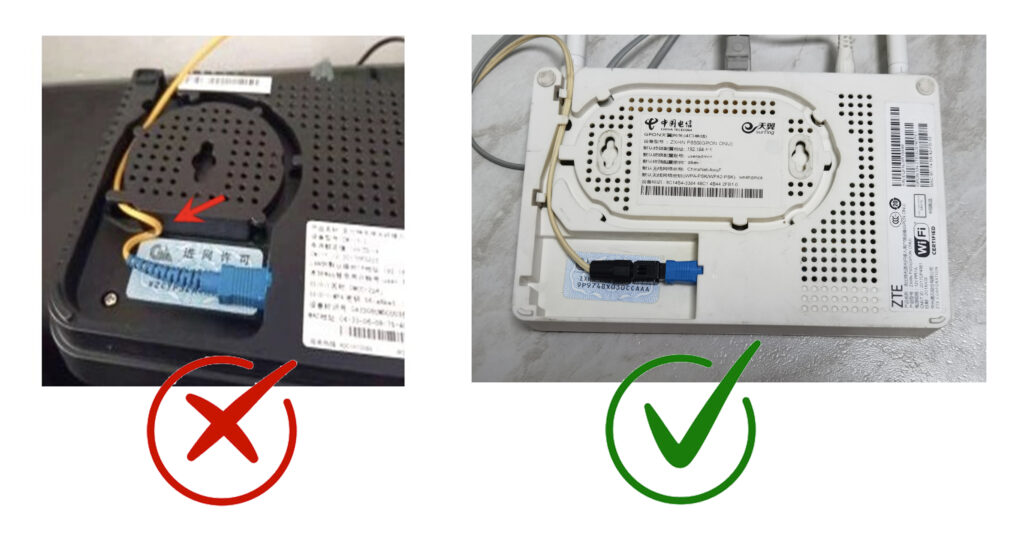
According to statistics on installation and maintenance failures of a certain metropolitan area network, the proportion of installation and maintenance failures caused by insufficient bending radius of pigtails accounts for up to 50%. Therefore, it is not advisable to use pigtails to terminate the drop cable during FTTH installation. Instead pre-terminated drop cables (as shown in the figure 7 below) should be used for installation and termination.
